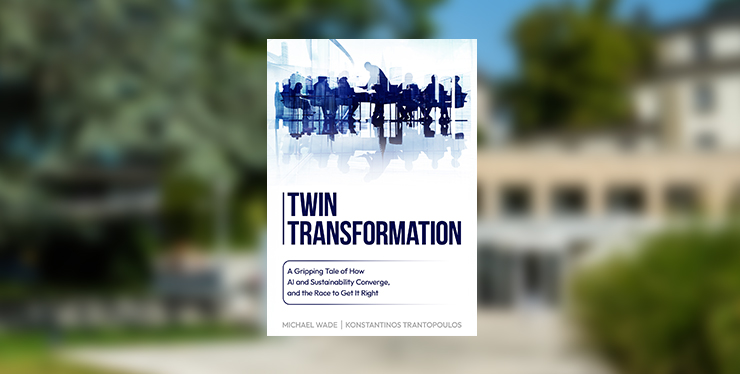
Pandemic bonds in coronavirus times: ‘financial goofiness’ or fiscal genius?
Most of us heard the term “coronavirus” for the first time earlier this year. However, the threat of a new massive contagion similar to SARS or MERS was already known to the World Health Organization (WHO) and probably some in the medical community.
Even more interestingly, it was also well known to financial markets. In June 2017, the International Bank for Reconstruction and Development (IBRD, the lending arm of the World Bank) issued some USD $320 million in CAT (pandemic) bonds, or coronavirus bonds, that would expire on July 15, 2020 and that took coronavirus into consideration. These bonds were risky financial instruments whose payoffs were contingent upon the outbreak of a global disease – coronavirus was one in a list including flu, Crimean Congo hemorrhagic fever, filovirus, Lassa fever and Rift Valley Fever.
How do they work? An investor would invest, for example, USD $1,000 on June 2017 and get their money back three years later. During that period, they would receive interest of between 8%-12% per year depending on the specific instrument and the evolution of interest rates and paid monthly. Payments were made possible by contributions from the governments of Japan and Germany, termed IBRD donor countries because of their regular contributions.
At the end of the life of the bond, the investor would get their USD $1,000 back. However, if during these three years there was an outbreak of the aforementioned diseases, the bonds would stop making the monthly interest payments and would not pay the base amount. That is, the investor would lose their money and instead it would be funneled off to the affected countries, courtesy of the IBRD.
Additionally, in a bid to prevent the payments of coronavirus bonds, the WHO also enlisted a precise, albeit heavy, set of rules designed to help qualifying the trigger. Overall, it was designed as an insurance mechanism to help some of the world’s poorest countries deal with a possible pandemic.
The bonds have come to popular attention because the recent Covid-19 outbreak is the first event to trigger the default (that is, the loss of the base amount by investors) on the bonds, and have been deemed useless and accused of “waiting for people to die.”
Former World Bank Chief Economist Larry Summers has described the issuance as “financial goofiness” and an “embarrassing error.” Some of these criticisms are certainly justifiable. For example, the bonds help the suffering country only after very strict conditions which are also legally complex to verify have been met. One of these is that a certain number of deaths must have been officially recorded, implying that countries can only use the money to resolve, but not to prevent, a pandemic. Other criticisms were less justifiable.
All in all, we see these early attempts to securitize such risks as a great potential solution for helping to address some of the most devastating diseases in today’s society. Here are the three driving forces behind our thinking:
- Coronavirus bonds price a risk that is highly uncorrelated with the traditional sources of financial risks to which investors are exposed (currency risk, geopolitical risks, market risks, and even cybersecurity and terrorism risk). Therefore, they offer a relatively cheap way to diversify a portfolio, creating value for investors by reducing the overall risks and simultaneously increasing the expected return. This additional value for investors will be translated into value for donors and countries.
- These bonds have the potential to provide awareness for investors and the world at large. To price them, investors need to assess the probability of default (i.e. of a pandemic outbreak) with some degree of detail. And in the presence of thousands of potential investors agreeing on a price, such assessment is much better than when it is done by a single institution (i.e. World Health Organization or a government). Ultimately, the pricing process would empower us with an unbiased probability of a pandemic outbreak so that government agencies and world health organizations could use these pieces of information for policy implications. They would have a bona fide figure (a risk percentage) with which to raise awareness on the possibility of a pandemic outbreak and potentially also could give ammunition to prepare for such crises. Tragically, these pieces of information were already available in 2017. In hindsight, it is difficult to comprehend how unexpected this event was and how unprepared we were when it exploded onto the scene.
- This, and similar financial instruments, could help to align the incentives of different stakeholders and thus help in the resource allocation process. As these bonds are priced in the market, it is not difficult to imagine a situation where a high probability of a pandemic outbreak pushes some research money in that direction – thanks to pharma companies and investors alike. This would reduce both the probability of an outbreak and its consequences. It is a situation in which everybody would be better off: government agencies, donors, investors and society.
Given the fact that further pandemics are expected, financial instruments like these could offer advantages that go beyond offsetting the potential challenges associated with future outbreaks.
Research Information & Knowledge Hub for additional information on IMD publications
IMD produces a yearly Smart City Index offering a balanced focus on economic and technological aspects of smart cities on the one hand, and “humane dimensions” of smart cities (quality of life, environment, and inclusiveness) on the other. In this...
Research Information & Knowledge Hub for additional information on IMD publications
Research Information & Knowledge Hub for additional information on IMD publications
Published by International Institute for Management Development ©2025
Research Information & Knowledge Hub for additional information on IMD publications
in I by IMD
Research Information & Knowledge Hub for additional information on IMD publications
Research Information & Knowledge Hub for additional information on IMD publications
in I by IMD
Research Information & Knowledge Hub for additional information on IMD publications
Research Information & Knowledge Hub for additional information on IMD publications
Research Information & Knowledge Hub for additional information on IMD publications
Research Information & Knowledge Hub for additional information on IMD publications
IMD World Competitiveness Center Report, 8 April 2025
Research Information & Knowledge Hub for additional information on IMD publications










